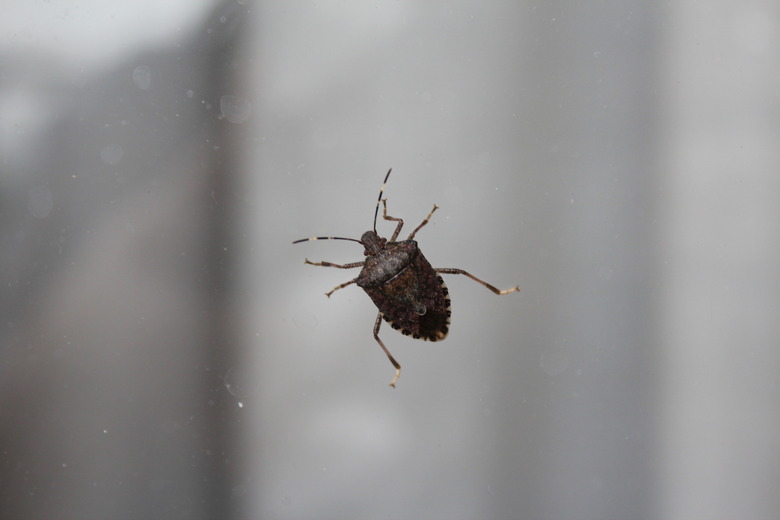What Attracts Stinkbugs To The Indoors?
Millions of brown marmorated stinkbugs, or BMSB, invade American homes every year. Wondering why stink bugs are so intent on inviting themselves in? Their passion to get inside your home is triggered by the fall equinox — an intriguing astronomical event that also compels other insects, such as cluster flies and Asian lady beetles, to seek shelter. Once entrenched, they hibernate and spend the winter.
Why There Are So Many
Why There Are So Many
Hitherto unknown on the North American continent, the stinkbug, or Halyomorpha halys, was accidentally introduced into eastern Pennsylvania. Collected and identified in September 1998, this nearly 3/4-inch-long member of the insect family Pentatomidae is defined as a true bug and named for scent glands located on the dorsal surface of the abdomen and the underside of the thorax. These glands produce foul smelling and tasting chemicals designed for defense.
In Asia, where they originate, a species of wasp work as natural stinkbug killers, keeping stinkbug populations nicely in check. Unfortunately, they have no natural predators in the United States, so the BMSB population grows uncontrolled. They smell bad and taste worse, so other insects and birds promptly spit them out at first bite. Although spiders and praying mantises dine on the foul-tasting creatures, they don't eat enough to make a dent in their huge populations.
What the Stink Is About
What the Stink Is About
The good news is, stinkbugs in a house are simply a nuisance. They smell bad and creep homeowners out, but they don't cause any structural damage. BMSB don't reproduce inside homes either, so you need not worry that your unwanted house guests are multiplying inside your walls. People with allergies to cockroaches and lady beetles may also prove allergic to stinkbugs, but these allergies are rare and not usually severe.
Although not harmful to humans and their houses, BMSB devastate agriculture. The brown marmorated stinkbug feeds and develops on more than 300 different host plants. Just a few of the plants and trees stinkbugs love include fruit trees like peach and apple, blackberries, tomatoes, corn and sunflowers. The plant tissue dies where a stinkbug feeds on it, causing massive crop damage and financial losses in areas where large numbers of BMSB thrive.
When You'll See Them
When You'll See Them
In the Northern Hemisphere, later dawns and earlier sunsets usher in cooler days as summer melts into winter. The fall equinox occurs late in the day on September 22, with its first full day on September 23. At this crucial juncture in the earth's rotation, nothing can stop the onslaught of stinkbugs. At this precise time, driven by sheer instinct, the bugs arrive.
At this time, you'll notice stinkbugs swarming on exterior walls in the sunniest, warmest and most reflective areas. They then squeeze through any cracks and crevices they find, looking for dark nooks and crannies in which to hibernate over the winter. You likely won't see them during the cold winter months, but they may move about on unseasonably warm winter days or if exposed to a heat source. In spring, they emerge in full force, attempting to get back outside to start breeding and laying eggs.
Thwarting a Stinkbug Infestation
Thwarting a Stinkbug Infestation
While you can't do much to change the course of nature, you can meet the formidable challenge stinkbugs present. Caulk up cracks and crevices around windows and doors to limit entry points and install weather stripping under exterior doors. Cover vents with mesh screen to keep the bugs out and choose the plants around your home carefully. Select plants that are the least likely to attract BMSB so there are fewer of them in your yard to begin with.
If you find a stinkbug in your home, flush it down the toilet or suck it up into your vacuum cleaner. Don't smash it, as this creates a horrible odor. Pick off stinkbugs one by one and resist the urge to spray your home with insecticide. This rarely works with the BMSB and if it does, you risk inviting carpet beetles into your home to dine on the dead stinkbug carcasses in your walls.
